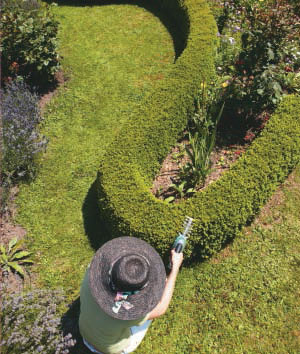There is plenty to do and enjoy in the garden in winter time
Plant strawberries: May is a good time to plant strawberries so they will be in fruit for spring. Plant into soil improved with manure and compost. And why not get the kids involved – growing strawberries in a fun project for children.
Cymbidium orchids: If you have cymbidium orchids in pots, move them into full sun so they’ll produce good flowers in winter and spring.
Fertilise the ‘old favourites’: Azaleas, camellias, rhododendron and daphne will benefit from a dose of specialised fertiliser around about now.
Prepare for winter: Is there a sheltered outdoor area where you can sit when the weather cools or the rain falls? If not, create one so spending time in the garden isn’t just a fair weather thing.
Potted plants: Reduce water to indoor plants (except ferns) in the cooler months and move outdoor pot plants into warm sheltered spots so they can make the most of the winter sun.
Clean up fallen leaves: Leaves fall and create a natural carpet (mulch) that helps keep the moisture and nutrients in the soil. You can let the leaves lie on garden beds, but collect the rest and add them to the compost heap.
Herb cuttings: Cuttings can be taken from herbs in warm areas, to propagate new plants. Some plants which will strike include basil, mint, thyme and oregano.
Prune hedges: Prune hedges several times a year to keep them in shape. If you live in a temperate or warm climate, trimming can be done at any time of year so why not do now while there’s not quite as much to do in the garden.
Improve soils: Heavy rains wash away nutrients and organic matter from the soil, and can leave the ground boggy and compacted. Aerate with a garden fork, add compost or a compost tea and cover with mulch.
Bulb storage: Store tulips and hyacinth bulbs in the fridge until planting time in mid-winter for good flowering. Plant the bulbs in pots or rich well-drained soil.
Prune camellias: Easy-to-grow Sasanqua camellias flower heavily in autumn and early winter. After the blooms are spent, you can prune. This makes the shrub bushier, which leads to more flowers.
Deter pest birds: The best way to deter pest birds from around your house and garden is to have layers of planting, particularly with some dense, small-leafed shrubs which small native birds love, but larger birds shy away from.
Prune shrubs: In frost-free areas May is a great time to prune and cut back summer-flowering shrubs. Climbing plants, like jasmine and clematis, can be cut back by at least half now too.
Rose pruning: You can start pruning roses in June. Remove older growth in roses cutting off just above a new outward-facing bud. Leave all the fresh long stems or branches that grew vigorously last season.
Fruit trees: Fruit trees can be pruned back quite hard now and to a height that makes picking fruit next season within easy reach. Watch when cutting back fruit trees to leave the small fruiting spurs that are sometimes present on the older wood. You can spray with a lime-sulphur mix after pruning to control scale insects.
Moving plants: These are tasks that can be done in June. You can move most shrubs now and replant in more desirable positions in your garden. Bare-rooted stock is available in most nurseries so it’s a perfect time to fill your garden with new plants.
Protect plants from frost: With colder mornings on the way, May and June are the months to think about protecting more vulnerable plants from frost with Hessian or shade cloth. You can also lay a thin layer of straw or hay over vulnerable perennials.
Garden tools: Give all your garden tools and equipment a thorough cleaning and perhaps give the shed a good clean-out. Also check hoses and irrigation systems.
National Tree Day: Start looking for areas to plant trees on National Tree Day on July 31. You can plant a tree in your own yard or join one of Planet Ark’s organised activities (http://treeday.planetark.org/).







